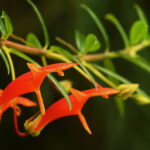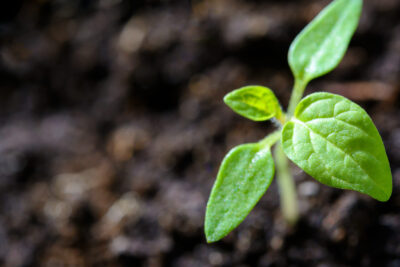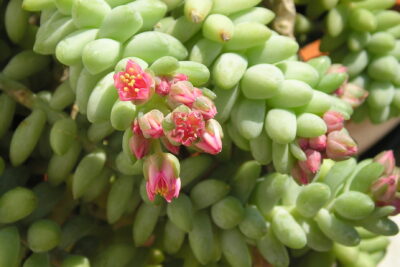
Low-Water Succulents: Discovering Thin-Leafed Varieties

Succulents have gained popularity in recent years, with their unique and beautiful shapes, as well as their ability to thrive in low-water environments. These plants are known for their thick, fleshy leaves that allow them to store water and survive in arid conditions. However, there is a lesser-known category of succulents that have thin, delicate leaves, yet still possess the remarkable ability to withstand drought. These low-water succulents offer a different aesthetic appeal and can be a great addition to any garden or indoor plant collection.
We will explore the world of low-water succulents with thin-leafed varieties. We will discuss the characteristics and care requirements of these unique plants, including their water needs, sunlight preferences, and soil requirements. Additionally, we will highlight some of the most popular thin-leafed succulents, showcasing their striking appearances and providing tips on how to propagate and maintain them. Whether you are a seasoned succulent enthusiast or just starting your succulent journey, this article will provide valuable information on low-water succulents with thin leaves.
- Use a well-draining soil mix for your succulents
- Water your succulents sparingly, allowing the soil to dry out completely between waterings
- Choose succulent varieties with thin leaves, as they are adapted to low-water conditions
- Place your succulents in a location with bright, indirect sunlight
- Avoid overwatering your succulents, as this can lead to root rot
- Consider using a watering method that allows for controlled and measured water delivery, such as a drip irrigation system
- Provide adequate air circulation around your succulents to prevent moisture build-up
- Mulch the soil around your succulents to help retain moisture and prevent evaporation
- Monitor your succulents closely and adjust their care regimen based on their individual needs
- Consider grouping your succulents together, as they can benefit from the microclimate created by their close proximity
- Frequently Asked Questions
Use a well-draining soil mix for your succulents
When it comes to growing low-water succulents, one of the most important factors to consider is the type of soil you use. These plants originate from arid regions and have adapted to survive in dry conditions. Therefore, it's crucial to provide them with a well-draining soil mix that mimics their natural habitat.
Avoid using regular potting soil, as it tends to retain moisture for longer periods, which can lead to root rot and other issues. Instead, opt for a specialized succulent or cactus mix. These blends are designed to provide excellent drainage while still retaining enough moisture for the plants.
In addition to using a well-draining soil mix, you can further improve drainage by adding perlite or coarse sand. These amendments will help create air pockets in the soil, allowing excess water to flow through more easily.
Benefits of using a well-draining soil mix:
- Prevents root rot: Succulents are prone to root rot if their roots sit in waterlogged soil for too long. A well-draining soil mix helps prevent this by allowing excess water to escape.
- Enhances nutrient uptake: Proper drainage ensures that essential nutrients reach the roots effectively, promoting healthy growth and development.
- Reduces risk of fungal infections: Wet soil can create a favorable environment for fungal diseases. By using a well-draining soil mix, you minimize the risk of these infections.
- Encourages strong root development: Succulents thrive when their roots have room to breathe. A well-draining soil mix promotes healthy root growth by providing oxygen and preventing waterlogged conditions.
Remember to repot your succulents every couple of years to ensure they have fresh, well-draining soil. This will help maintain their overall health and prevent any potential soil-related issues.
 Unveiling the Special Qualities of Dolphin Succulent
Unveiling the Special Qualities of Dolphin SucculentWater your succulents sparingly, allowing the soil to dry out completely between waterings
When it comes to succulents, one of the most important things to keep in mind is their water requirements. Unlike many other plants, succulents have adapted to survive in arid conditions by storing water in their leaves, stems, or roots. This unique characteristic allows them to thrive in environments where water is scarce.
One key aspect of caring for succulents is to water them sparingly. It's crucial to allow the soil to dry out completely between waterings. Overwatering can lead to root rot and other issues, so it's best to err on the side of underwatering when it comes to these plants.
Why choose low-water succulents?
- Drought-tolerant: Low-water succulents are incredibly resilient and can withstand extended periods without water. This makes them perfect for those who live in dry climates or for individuals who may forget to water their plants frequently.
- Low maintenance: Due to their ability to store water, low-water succulents require less frequent watering compared to other plants. This makes them an excellent choice for busy individuals or those who do not have a green thumb.
- Unique aesthetics: Thin-leafed succulents often have a delicate and elegant appearance, with their slender leaves and intricate patterns. They can add a touch of natural beauty to any indoor or outdoor space.
Popular thin-leafed succulent varieties
- Sedum morganianum (Burro's Tail): With its trailing stems and plump, blue-green leaves, this succulent is a favorite among succulent enthusiasts. It thrives in bright, indirect light and requires minimal watering.
- Aloe vera: Known for its medicinal properties, aloe vera is a versatile succulent with long, narrow leaves that have toothed edges. It prefers bright, indirect light and requires infrequent watering.
- Haworthia fasciata (Zebra Plant): This unique succulent features thick, triangular leaves with white horizontal stripes, resembling a zebra pattern. It is a low-maintenance plant that thrives in bright, indirect light.
- Sempervivum tectorum (Hens and Chicks): This succulent forms rosette-shaped clusters of fleshy leaves that come in various colors, including green, red, and purple. It is a hardy plant that can tolerate neglect and thrives in full sun.
By opting for low-water succulents, you can enjoy the beauty of these unique plants while minimizing your water usage and maintenance efforts. Remember to provide them with the right amount of light and resist the temptation to overwater them. With proper care, your thin-leafed succulents will thrive and bring a touch of nature to your living spaces.
Choose succulent varieties with thin leaves, as they are adapted to low-water conditions
Succulents have gained immense popularity as houseplants due to their unique appearance and ability to thrive in arid conditions. These plants have evolved to store water in their leaves, stems, and roots, allowing them to survive in environments with limited water availability.
When it comes to selecting succulents for your indoor or outdoor garden, it's important to consider their water requirements. Some succulent varieties have thin leaves, which are specially adapted to low-water conditions. These thin-leafed succulents have certain characteristics that make them ideal for environments with limited access to water.
 Introducing Our Lime Green Succulent: A Perfect Addition!
Introducing Our Lime Green Succulent: A Perfect Addition!Characteristics of thin-leafed succulents
- Efficient water storage: Thin-leafed succulents have specialized tissues that are designed to store water efficiently. Their leaves are thinner and have a larger surface area, allowing them to absorb and retain water more effectively.
- Reduced water loss: The thin leaves of these succulents have a smaller surface area, which helps minimize water loss through transpiration. This adaptation allows them to conserve water for extended periods.
- Drought tolerance: Thin-leafed succulents are naturally more drought-tolerant compared to their fleshy-leafed counterparts. They can withstand longer periods without water and can bounce back quickly after a dry spell.
- Adaptability: These succulents are adaptable to a wide range of growing conditions and can thrive in both indoor and outdoor settings. They can withstand fluctuations in temperature and light, making them excellent choices for various climates.
Popular thin-leafed succulent varieties
There are several popular succulent varieties with thin leaves that you can consider for your garden or collection. Some of these include:
- Aloe vera: Known for its medicinal properties, aloe vera has long, slender leaves with serrated edges. It is not only aesthetically pleasing but also a hardy succulent that can tolerate low-water conditions.
- Echeveria: This rosette-forming succulent is available in various colors and textures. It has fleshy, elongated leaves that taper at the end, making it an excellent choice for low-water gardens.
- Haworthia: Haworthia species, such as Haworthia attenuata and Haworthia fasciata, have thin, pointed leaves with intricate patterns. These succulents are perfect for adding visual interest to your indoor succulent collection.
- Sedum: Sedum plants come in a wide range of shapes and sizes, with some having thin, needle-like leaves. They are known for their resilience and can survive in challenging conditions with minimal water.
By choosing succulent varieties with thin leaves, you can create a stunning garden that not only requires less water but also adds beauty to your space. These low-water succulents are not only easy to care for but also provide an excellent opportunity to explore the fascinating world of succulents.
Place your succulents in a location with bright, indirect sunlight
Succulents are known for their ability to thrive in arid conditions, making them a popular choice for indoor and outdoor gardens. When it comes to succulent care, one of the most important factors to consider is sunlight. While succulents do need sunlight to survive, it's crucial to provide them with the right amount and intensity of light.
When choosing a location for your succulents, opt for a spot that receives bright, indirect sunlight. Direct sunlight can be too intense and may scorch the delicate leaves of thin-leafed succulents. Placing them near a south or east-facing window is ideal, as these areas usually receive the right amount of sunlight without exposing the plants to direct rays.
If you don't have access to natural sunlight, you can also use artificial grow lights to provide the necessary light for your succulents. LED grow lights are a great option as they emit the right spectrum of light for plant growth and can be adjusted to the appropriate intensity.
Remember to regularly rotate your succulents to ensure all sides receive equal amounts of light. This will help prevent your plants from leaning towards the light source and promote even growth.
 Succulent Growth Habits: Tall or Compact?
Succulent Growth Habits: Tall or Compact?Additionally, keep an eye on your succulents' leaves. If they start to appear stretched out or elongated, it may be a sign that they are not receiving enough light. On the other hand, if you notice the leaves turning brown or yellow, it could indicate that they are getting too much direct sunlight. Adjust the placement accordingly to maintain a healthy balance.
Avoid overwatering your succulents, as this can lead to root rot
When it comes to succulents, one of the most common mistakes beginners make is overwatering. Succulents are known for their ability to store water in their leaves, stems, and roots, allowing them to survive in arid environments. However, this also means that they are highly susceptible to root rot if they are given too much water.
Root rot occurs when the roots of a plant are constantly sitting in water, leading to the growth of harmful bacteria and fungi. This can cause the roots to become mushy and eventually die, resulting in a wilted and unhealthy succulent.
To avoid overwatering your succulents, it's important to understand their watering needs. Unlike most plants, succulents thrive in dry conditions and prefer to be slightly underwatered rather than overwatered. Here are some tips to keep your succulents happy and healthy:
1. Use a well-draining soil mix
Succulents require a well-draining soil mix to prevent water from pooling around their roots. You can either purchase a pre-made succulent mix or create your own by combining equal parts of potting soil, perlite, and coarse sand. This will ensure that excess water can easily escape, preventing the risk of root rot.
2. Water deeply but infrequently
When watering your succulents, it's crucial to give them a thorough soak and then allow the soil to dry out completely before watering again. Aim to water your succulents deeply, allowing the water to reach the roots, but avoid watering them too frequently. The frequency of watering will depend on various factors such as the size of the pot, the type of succulent, and the weather conditions.
 Top Heat-Loving Succulents: Perfect for Campfire Conditions
Top Heat-Loving Succulents: Perfect for Campfire Conditions3. Observe the signs of dehydration
One way to determine if your succulent needs water is by observing its leaves. If the leaves appear plump and firm, it's a sign that the succulent is well-hydrated. However, if the leaves are wrinkled, shriveled, or soft, it indicates that the succulent is dehydrated and in need of water. By paying attention to these visual cues, you can avoid overwatering and provide your succulents with the right amount of moisture.
4. Use the "soak and dry" method
Another effective watering technique for succulents is the "soak and dry" method. This involves thoroughly watering the succulent until water drains out from the bottom of the pot and then allowing the soil to dry out completely before watering again. This mimics the natural rainfall patterns in their native habitats, preventing the roots from staying constantly wet and reducing the risk of root rot.
By following these tips, you can ensure that your succulents thrive and stay healthy without the risk of overwatering. Remember, succulents are built to withstand drought-like conditions, so it's better to underwater them than to overwater and risk their survival.
Consider using a watering method that allows for controlled and measured water delivery, such as a drip irrigation system
When it comes to caring for low-water succulents, one of the most important factors to consider is the watering method. These thin-leafed varieties are adapted to thrive in arid environments, making them excellent choices for water-wise gardens. However, overwatering can be detrimental to their health.
A drip irrigation system is an efficient way to ensure that your low-water succulents receive the right amount of water. This method delivers water directly to the roots, minimizing evaporation and reducing the risk of overwatering. With a drip system, you can control the frequency and duration of watering, allowing you to easily adjust it to meet the specific needs of your succulents.
Installing a drip irrigation system may require some initial investment and effort, but the benefits are well worth it. Not only does it conserve water, but it also saves you time and effort in the long run. With a drip system, you can automate the watering process and ensure that your succulents are consistently and evenly hydrated.
 Popular Chalk Stick Succulents: Exploring Varieties and Names
Popular Chalk Stick Succulents: Exploring Varieties and NamesRemember to position the drip emitters close to the base of each succulent to deliver water directly to the root zone. This will help prevent water from being wasted on the surrounding soil or evaporating before it reaches the plants. Additionally, using a timer can further enhance the efficiency of your drip system by allowing you to set specific watering schedules.
By implementing a drip irrigation system for your low-water succulents, you can provide them with the optimal amount of water while minimizing waste and avoiding the risk of overwatering. This method will not only promote healthier growth but also make your gardening experience more convenient and sustainable.
Provide adequate air circulation around your succulents to prevent moisture build-up
When it comes to caring for succulents, one important factor to consider is air circulation. Adequate air circulation around your succulents is crucial in preventing moisture build-up, which can lead to various problems like root rot and fungal diseases.
Thin-leafed succulent varieties are particularly susceptible to moisture-related issues due to their delicate nature. These low-water succulents have adapted to survive in arid conditions by storing water in their leaves, stems, and roots. However, their thin leaves make them more prone to damage caused by excess moisture.
To ensure your thin-leafed succulents thrive, here are a few tips to provide them with the proper air circulation they need:
1. Choose the right pot and soil
Start by selecting a well-draining pot and using a suitable succulent mix. A pot with drainage holes allows excess water to escape, preventing it from sitting around the roots. Additionally, using a well-draining soil mix that includes perlite or sand helps promote air circulation within the root system.
2. Avoid overwatering
Overwatering is one of the most common mistakes made when caring for succulents. It's essential to establish a watering routine that suits the specific needs of your succulents. Thin-leafed varieties generally require less water compared to their fleshy counterparts. Allow the soil to dry out completely between waterings to prevent excess moisture from accumulating.
 Succulent Flowers: A Complete Guide to Blooming Beauty
Succulent Flowers: A Complete Guide to Blooming Beauty3. Provide adequate spacing
When arranging your succulents, ensure they have enough space between them. Crowding succulents together can hinder air circulation, creating a humid microclimate that encourages moisture build-up. Give each plant enough room for air to flow freely around its leaves and stems.
4. Place in a well-ventilated area
Choose a location for your succulents where they can receive ample airflow. Avoid placing them in areas with stagnant air or high humidity, such as bathrooms or closed terrariums. Instead, opt for well-ventilated spots like balconies, patios, or near open windows.
Note: If you live in a particularly humid climate, you may want to consider using a small fan to enhance air circulation around your succulents.
By paying attention to air circulation and taking the necessary steps to prevent moisture build-up, you can ensure that your thin-leafed succulents remain healthy and vibrant. Remember, a little extra care goes a long way in maintaining the beauty and longevity of these unique and fascinating plants.
Mulch the soil around your succulents to help retain moisture and prevent evaporation
Succulents are known for their ability to thrive in arid conditions, but even these hardy plants can benefit from a little extra moisture retention. One simple and effective way to achieve this is by mulching the soil around your succulents.
Mulch acts as a protective layer on the soil's surface, helping to regulate temperature, prevent weed growth, and conserve moisture. For low-water succulents, using an organic mulch such as wood chips, straw, or dried leaves can be highly beneficial.
 The Rare Succulent: Uncovering Its Unique Qualities
The Rare Succulent: Uncovering Its Unique QualitiesWhen applying mulch, make sure to leave a small gap around the succulent's stem to prevent rot. Aim for a thickness of around 2-3 inches to provide adequate coverage. The mulch will help to insulate the soil, reducing evaporation and keeping the roots cool during hot weather.
Additionally, mulch can also improve soil fertility over time as it breaks down and adds organic matter. This can benefit your succulents by providing them with essential nutrients and promoting healthier growth.
Remember to periodically check the moisture level of the soil beneath the mulch. While succulents are drought-tolerant, they still require some water. Use your finger to probe the soil and water only when it feels dry to the touch.
Mulching the soil around your low-water succulents is a simple and effective way to help retain moisture, prevent evaporation, and promote healthy growth. By providing a protective layer and conserving water, you can ensure that your thin-leafed succulents thrive in even the most challenging environments.
Monitor your succulents closely and adjust their care regimen based on their individual needs
When it comes to succulents, one size does not fit all. Each succulent variety has its own unique characteristics and requirements, especially when it comes to water intake. Some succulents have thin leaves that are adapted to low-water conditions, making them perfect for those who tend to forget to water their plants or live in areas with limited rainfall.
Monitoring your succulents closely is crucial to ensure their well-being. Observing their leaves and overall appearance can give you valuable insights into their hydration needs. Thin-leafed succulents, such as Haworthias and Sedums, have leaves that are less fleshy and more delicate compared to their chubby counterparts like Echeverias and Crassulas.
 Best Sun-loving Succulents for Tokyo: Top Choices & Tips
Best Sun-loving Succulents for Tokyo: Top Choices & TipsHere are some tips for caring for low-water succulents:
- Water sparingly: Thin-leafed succulents have adapted to survive in arid conditions, so they don't require frequent watering. Allow the soil to dry out completely between waterings, and avoid overwatering, as it can lead to root rot.
- Choose well-draining soil: Use a well-draining soil mix specifically formulated for succulents or create your own by combining regular potting soil with perlite or coarse sand. This will prevent excess moisture from accumulating around the roots.
- Provide adequate sunlight: Low-water succulents thrive in bright, indirect light. Place them near a south-facing window or in a spot that receives at least 6 hours of sunlight per day. Be cautious of intense midday sun, as it can scorch their delicate leaves.
- Monitor temperature and humidity: Thin-leafed succulents are generally more tolerant of cooler temperatures compared to their plumper counterparts. However, it's important to protect them from frost and freezing temperatures. Additionally, they prefer lower humidity levels, so avoid placing them in areas with high humidity, such as bathrooms.
- Fertilize sparingly: Low-water succulents have adapted to survive in nutrient-poor soils, so they don't require frequent fertilization. Apply a diluted succulent fertilizer once or twice a year during their active growing season to provide them with a small nutrient boost.
By closely monitoring your low-water succulents and adjusting their care regimen accordingly, you can ensure that they thrive and bring beauty to your space. Remember, each succulent is unique, so it's important to pay attention to their individual needs to promote their overall health and vitality.
Consider grouping your succulents together, as they can benefit from the microclimate created by their close proximity
When it comes to cultivating low-water succulents, one effective strategy is to group them together. By placing your thin-leafed succulents in close proximity, you can create a microclimate that is conducive to their growth and overall well-being.
Succulents, with their unique ability to store water in their leaves, are well-suited to arid environments. However, by grouping them together, you can further enhance their ability to thrive in low-water conditions. This is because when succulents are placed close together, they create a microclimate that traps moisture and provides shade, reducing water loss through evaporation.
Additionally, grouping succulents together can create a visually stunning arrangement. By combining different varieties with varying colors, textures, and sizes, you can create a captivating succulent garden that is not only water-efficient but also aesthetically pleasing.
When selecting succulents to group together, consider their water requirements and growth habits. Some succulents have similar water needs and growth rates, making them ideal companions. On the other hand, certain succulents may have contrasting water requirements or growth habits, which can lead to imbalances within the group.
 Large and Lush: Discover the Succulents that Grow to Impressive Sizes
Large and Lush: Discover the Succulents that Grow to Impressive SizesBenefits of grouping succulents:
- Microclimate creation: By grouping succulents together, you create a microclimate that helps retain moisture and reduce water loss through evaporation.
- Water efficiency: Grouping succulents allows you to optimize water usage, as the microclimate created minimizes the need for frequent watering.
- Visual appeal: Combining different varieties of succulents in a group can create an eye-catching display that adds beauty to your garden or indoor space.
- Healthy growth: Succulents that are grouped together can benefit from each other's presence, promoting healthy growth and overall well-being.
- Easier maintenance: Taking care of a group of succulents is often easier than tending to individual plants, as they can share similar care requirements.
Grouping low-water succulents together is a beneficial approach to their cultivation. By creating a microclimate, optimizing water usage, and enhancing visual appeal, you can create a thriving succulent garden that is both sustainable and visually appealing.
Frequently Asked Questions
1. What are low-water succulents?
Low-water succulents are varieties of succulent plants that are adapted to survive in dry conditions with minimal water requirements.
2. Why should I choose low-water succulents?
Choosing low-water succulents is a great option for individuals who want to conserve water or live in regions with limited water resources. These plants require less watering and are more drought-tolerant.
3. How often should I water low-water succulents?
Low-water succulents should be watered sparingly, typically once every 1-2 weeks during the growing season. It is important to allow the soil to dry out completely between waterings to prevent root rot.
4. Can low-water succulents be grown indoors?
Yes, many low-water succulents can be grown indoors successfully. However, it is essential to provide them with ample sunlight and a well-draining potting mix to prevent overwatering and ensure their health and growth.
If you want to read more articles similar to Low-Water Succulents: Discovering Thin-Leafed Varieties, you can visit the Varieties and Colors category.






You Must Read